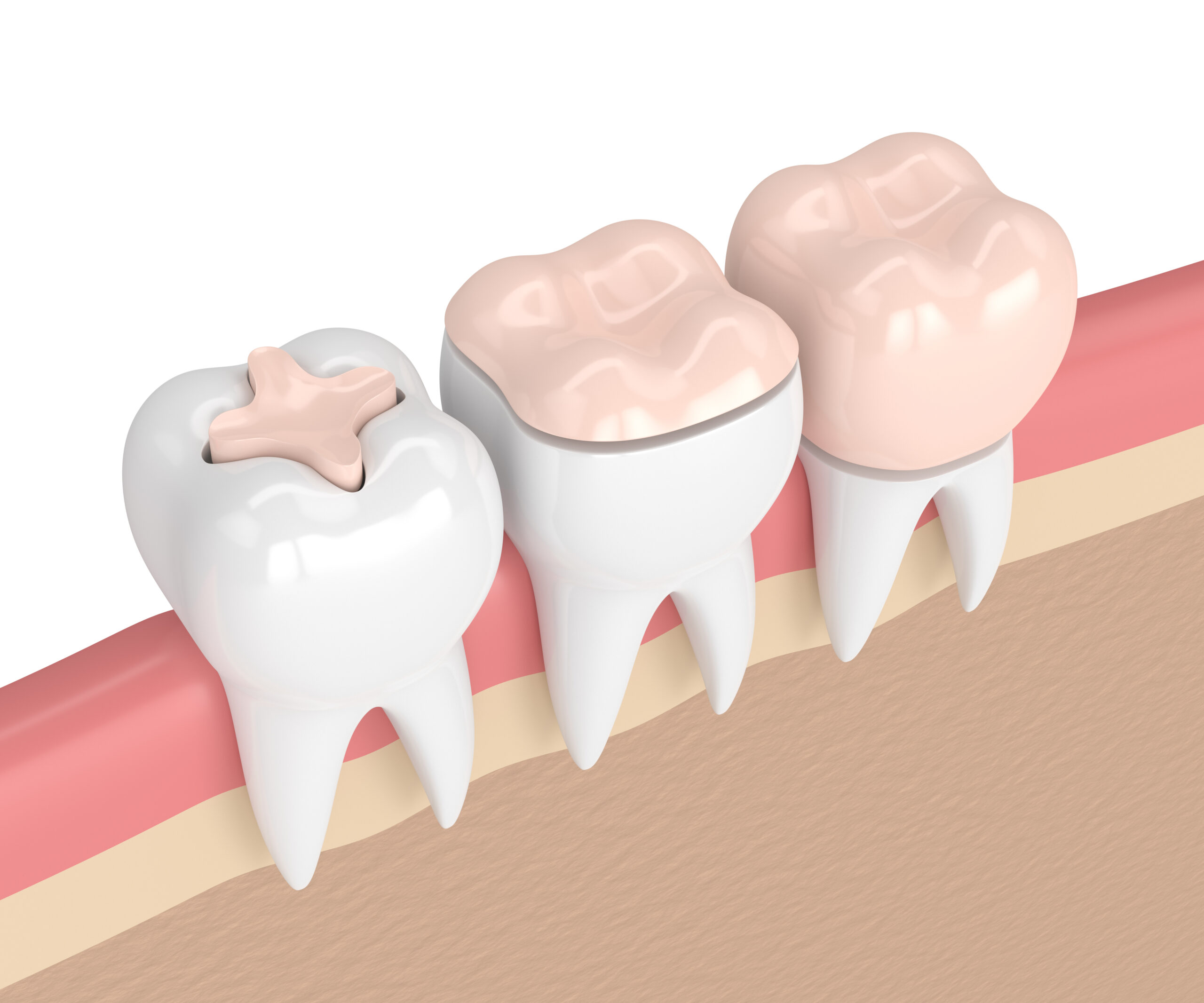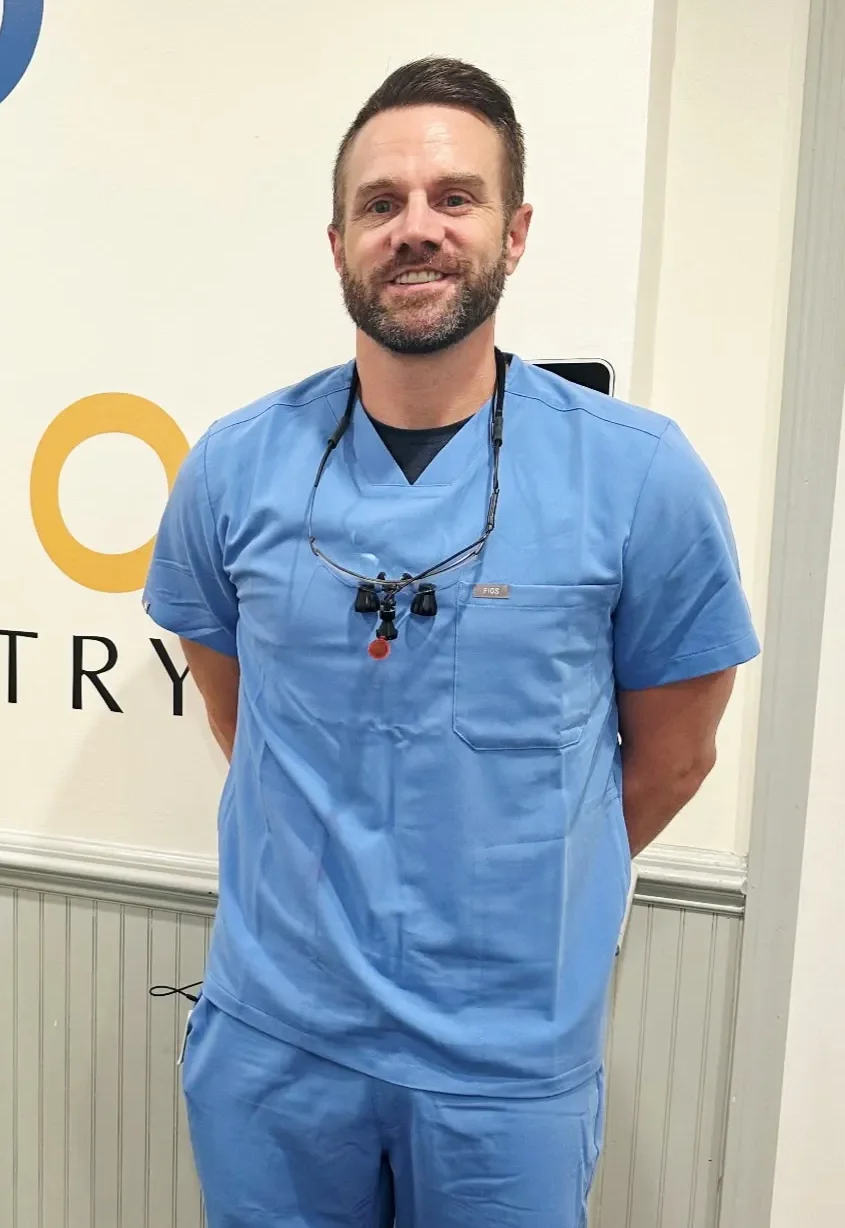Inlays and Onlays in Irmo

Conservative Ceramic Restorations
Inlays and onlays represent the perfect middle ground between traditional fillings and full crowns, providing conservative yet comprehensive restoration for moderately damaged teeth. At Irmo Dentistry, Dr. Jameson Davis utilizes advanced ceramic materials and precision fabrication techniques to create these custom restorations that strengthen weakened teeth while preserving maximum healthy tooth structure. These indirect dental restorations are ideal for teeth with damage too extensive for simple fillings but not severe enough to require full crown coverage.
Our approach to inlays and onlays combines the strength and durability of laboratory-fabricated restorations with the conservative philosophy of preserving natural tooth structure whenever possible. We serve patients throughout Irmo and surrounding South Carolina communities who need durable, aesthetic solutions for damaged back teeth that require more than a filling but less than a crown. These versatile restorations offer exceptional longevity and natural appearance while maintaining the structural integrity of your natural teeth.
Dental emergencies happen. Get immediate professional care with our same-day emergency appointment availability.

BENEFITS OF INLAYS AND ONLAYS
Maximum Structure Preservation
Inlays and onlays are the most conservative approach to restoring moderately damaged teeth, removing only diseased or damaged structure while preserving all healthy tooth material. This conservative treatment maintains tooth strength and reduces the risk of future complications while providing comprehensive protection.
Laboratory-Grade Strength
Custom-fabricated in professional dental laboratories, inlays and onlays provide strength and durability superior to direct fillings. The controlled fabrication process creates restorations with optimal physical properties that can withstand heavy chewing forces while maintaining their integrity for many years.
Precise Marginal Fit
The laboratory fabrication process allows for extremely precise margins that create an excellent seal against bacterial infiltration. This superior fit helps prevent secondary decay around the restoration while ensuring long-term success and optimal oral health protection.
STEPS OF PROCEDURE
Process
Step 1
Evaluation and Treatment Planning
We carefully assess the extent of tooth damage using digital imaging and clinical examination to determine if an inlay or onlay is the most appropriate treatment option. This thorough evaluation ensures that we recommend the most conservative yet effective restoration for your specific situation.
Step 2
Precise Tooth Preparation
The damaged or decayed portion of the tooth is carefully removed using minimally invasive techniques that preserve all healthy tooth structure. The preparation is precisely shaped to receive the indirect restoration while maintaining optimal tooth strength and supporting structure.
Step 3
Digital Impressions and Temporization
We take highly accurate digital impressions or traditional molds that capture every detail needed for perfect restoration fabrication. A temporary restoration protects the prepared tooth while your custom inlay or onlay is crafted in our trusted dental laboratory using premium materials.
Step 4
Laboratory Fabrication and Quality Control
Your restoration is custom-crafted by skilled dental technicians using high-quality ceramic materials and advanced fabrication techniques. Each restoration undergoes rigorous quality control to ensure a perfect fit, optimal strength, and natural appearance before delivery to our office.
Step 5
Bonding and Final Adjustment
The completed restoration is carefully bonded to your prepared tooth using advanced adhesive techniques that create a strong, permanent seal. We make any necessary adjustments to ensure perfect bite alignment and comfort, then polish the restoration to achieve ideal function and aesthetics.

When to Choose Inlays vs Onlays
The choice between inlays and onlays depends on the extent and location of tooth damage. Inlays are used when damage is confined to the area between the tooth cusps, similar to a traditional filling but with the strength advantages of laboratory fabrication. Onlays are recommended when damage extends over one or more cusps, providing protection and strength while still being more conservative than a full crown.
At Irmo Dentistry, we carefully evaluate each situation to recommend the most appropriate restoration type based on factors such as the extent of damage, bite forces, aesthetic requirements, and long-term prognosis. Our goal is always to provide the most conservative treatment that will give you the longest-lasting, most successful results. Whether you need an inlay or onlay, you can trust that your restoration will be precisely crafted and expertly placed for optimal function and appearance.
Precision Restoration Specialist
Dr. Jameson Davis has extensive experience in conservative restorative techniques, with particular expertise in determining when inlays and onlays provide the optimal balance between preservation and protection. His meticulous approach to tooth preparation ensures that every restoration preserves maximum healthy tooth structure while creating ideal conditions for long-term success. Dr. Davis works closely with master ceramists to ensure that every inlay and onlay meets his exacting standards for fit, function, and aesthetics. His commitment to conservative dentistry means that patients receive the least invasive treatment that will provide the most durable and beautiful results. He takes pride in helping patients avoid more extensive treatment through these versatile, tooth-saving restorations that can serve them faithfully for decades with proper care.

FAQS
What's the difference between inlays, onlays, and crowns?
Inlays fit within the cusps of a tooth like a puzzle piece, onlays cover one or more cusps for additional protection, and crowns cover the entire visible portion of the tooth. Each restoration type addresses different levels of damage, with inlays and onlays being more conservative options that preserve more natural tooth structure than crowns.
How long do inlays and onlays last?
High-quality ceramic inlays and onlays typically last 15-25 years or longer with proper care and regular dental maintenance. Their longevity often exceeds that of large direct fillings due to their superior materials and precise laboratory fabrication, making them an excellent long-term investment in your oral health.
Are inlays and onlays better than large fillings?
For moderate to large restorations, inlays and onlays offer several advantages over direct fillings, including superior strength, better marginal seal, improved aesthetics, and longer lifespan. They’re particularly beneficial for back teeth that experience heavy chewing forces and for patients who want the most durable restoration possible.
Will my inlay or onlay be noticeable?
Modern ceramic inlays and onlays are virtually invisible when properly fabricated and placed. We carefully match the color, translucency, and surface characteristics of your natural teeth to create restorations that blend seamlessly with your existing smile, often making them undetectable even to trained professionals.
How do inlays and onlays compare in cost to other treatments?
While inlays and onlays have a higher initial cost than direct fillings, they often provide better long-term value due to their superior durability and longevity. They typically cost less than crowns while providing many of the same benefits for appropriately selected cases, making them an excellent middle-ground option.
Can any tooth receive an inlay or onlay?
Inlays and onlays work best for back teeth (premolars and molars) that have moderate damage not extending to the gum line. The tooth must have sufficient remaining structure to support the restoration, and the damage pattern must be appropriate for this conservative approach. We’ll evaluate your specific situation to determine if this treatment is right for you.
